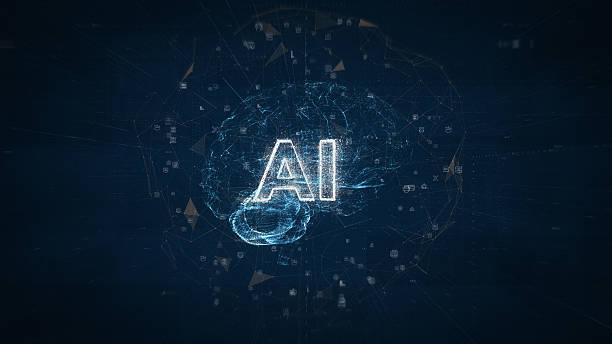What is Internal SEO? Definition and Importance
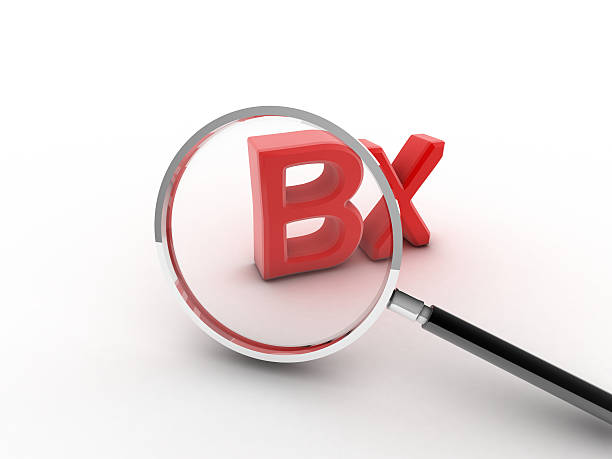
What is Internal SEO? Definition and Importance
Internal SEO or On-Page SEO is a set of techniques and actions that are performed within your website to improve your website’s ranking in search results (SERP).
These actions include optimizing content, site structure, title tags, meta descriptions, internal links, and other factors related to user experience and site accessibility for search engines like Google.
The main goal of #Internal_SEO is to provide quality and relevant content to users while creating a logical and understandable site structure for search engines.
The importance of internal SEO stems from the fact that it forms the foundation of a website’s ranking.
Without strong internal SEO, efforts for external SEO and link building will not achieve the desired results.
By optimizing the internal elements of the site, you help search engines better understand your content, and as a result, your site’s ranking in search results improves.
In other words, internal SEO helps you make your website more “search engine friendly.”
This makes it easier for search engines to find, crawl, and index your website pages.
As a result, your website ranks higher in search results and attracts more traffic.
Internal SEO optimization is an ongoing process and requires continuous review and updating.
However, by spending time and effort to improve internal SEO, you can achieve significant results in your website’s ranking and traffic.
To better understand internal SEO, you can refer to Wikipedia.
Tired of losing customers due to poor e-commerce site design? With Rasaweb, solve this problem forever!
✅ Increase sales and visitor-to-customer conversion rates
✅ Smooth and attractive user experience for your customers⚡ Get free consultation
Keyword Research: The Foundation of Internal SEO

Keyword Research: The Foundation of Internal SEO
#Keyword_research is one of the most important steps in internal SEO.
Keywords are phrases that users use in search engines to find the information they are looking for.
By identifying keywords related to your business and website content, you can optimize your content to rank higher in search results for those keywords.
The keyword research process involves identifying main and secondary keywords related to your business, checking the search volume of these keywords, checking the competition for these keywords, and choosing appropriate keywords to target in your website content.
There are various tools for keyword research, including Ahrefs, Semrush, and Google Keyword Planner.
Choosing the right keywords and using them strategically in your website content plays a crucial role in the success of internal SEO.
After finding the right keywords, you should use them naturally and relevantly in your content.
Excessive use of keywords (keyword stuffing) can negatively impact your site’s ranking.
The goal is to create quality and useful content for users that naturally contains the desired keywords.
This helps search engines better understand the topic of your content and display it to users in search results.
Remember that internal SEO is an ongoing process and you should regularly review and update your keywords.
Optimizing Title and Meta Descriptions

Optimizing Title and Meta Descriptions
Title Tags and Meta Descriptions are among the most important elements of internal SEO.
The title tag displays the title of your web page in search results, and the meta description provides a summary of the page’s content.
These two elements are the first thing users see in search results and play a crucial role in attracting users to your website.
To optimize the title tag, you should use the main keywords related to the page content, write an attractive and catchy title, and keep the title length within the range of 50-60 characters.
To optimize the meta description, you should provide an accurate and attractive summary of the page content, use relevant keywords, and keep the description length within the range of 150-160 characters.
Title tags and meta descriptions should be unique and optimized separately for each page of your website.
Internal SEO heavily relies on these two aspects.
table {
width: 100%;
border-collapse: collapse;
margin-bottom: 20px;
}
th, td {
border: 1px solid #ddd;
padding: 8px;
text-align: left;
}
th {
background-color: #f2f2f2;
font-weight: bold;
}
| Element | Importance | Recommendations |
|---|---|---|
| Title Tag | Very Important | Use main keywords, attractive title, appropriate length (50-60 characters) |
| Meta Description | Important | Accurate and attractive summary, use of keywords, appropriate length (150-160 characters) |
Content Optimization: The Golden Key to Internal SEO

Content Optimization: The Golden Key to Internal SEO
Content is king! This phrase is often heard in the world of SEO and is of great importance.
Quality, original, and relevant content not only attracts users but also helps search engines better understand your website and assign it a higher ranking.
To optimize content, you should use appropriate keywords in the title, text, subheadings, and images, produce unique and non-plagiarized content, regularly update your content, and provide content that answers users’ questions and needs.
In addition, you should also pay attention to the readability and structure of your content.
Using short paragraphs, catchy subheadings, relevant images and videos, and organized lists helps users read and understand your content more easily.
The more useful and attractive your content is to users, the more likely they are to spend more time on your website and visit other pages as well.
This shows search engines that your website has high value, and as a result, improves your ranking.
With proper internal SEO and quality content production, you can achieve success.
Image optimization is another important aspect of internal SEO.
Losing potential customers due to an unprofessional website? Rasaweb is your answer! With our specialized corporate website design services:
✅ Enhance the credibility and standing of your business
✅ Experience attracting more targeted customers
⚡ Act now to receive a free consultation!
Image Optimization: Increasing Site Speed and Ranking

Image Optimization: Increasing Site Speed and Ranking
Images play an important role in the attractiveness and understanding of website content.
However, large and unoptimized images can slow down website loading speed and negatively impact user experience and site ranking.
To optimize images, you should use appropriate formats (such as JPEG for images and PNG for logos), reduce image size without sacrificing quality, use Alt Text to describe images, and choose image filenames with relevant keywords.
Using Alt Text for images helps search engines understand the content of images and display them in search results.
Image filenames should also be descriptive and include relevant keywords.
By optimizing images, you can increase your website’s loading speed, improve user experience, and help search engines better understand your content.
This helps improve your site’s ranking in search results.
Internal SEO includes all of these things.
Remember that internal SEO is an ongoing process and requires constant attention and updating.
Internal Linking: Site Structure and User Experience
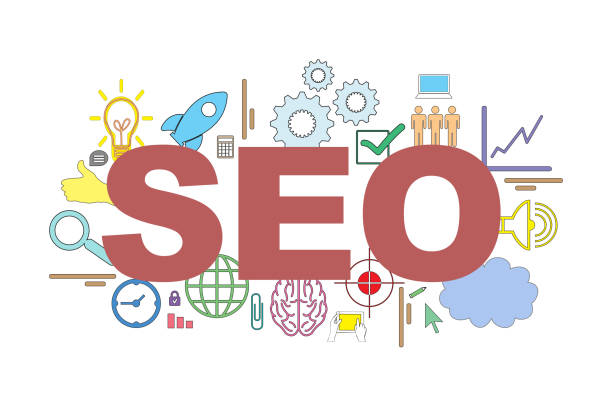
Internal Linking: Site Structure and User Experience
Internal linking means creating links between different pages of your website.
Internal linking helps search engines better understand your site structure and identify more important pages.
Also, internal linking helps users easily navigate your website and find the information they are looking for.
For effective internal linking, you should create relevant and natural links between your website pages.
Use descriptive anchor texts (clickable link text) that are relevant to the content of the destination page.
Create links to more important and strategic pages of your website.
Design your site structure so that users can easily access any page of your website.
With proper internal linking, you can improve your site structure, enhance user experience, and help search engines better understand your content.
This helps improve your site’s ranking in search results.
Internal SEO places great importance on internal linking.
Site Speed Optimization: User Satisfaction and Better Ranking

Site Speed Optimization: User Satisfaction and Better Ranking
Website loading speed is one of the important factors in user experience and site ranking.
Users expect websites to load quickly, and if a website is slow, they are very likely to leave the site and visit another site.
Search engines also consider site speed as a ranking factor and place faster websites in higher rankings.
To optimize site speed, you should use a reputable and high-speed hosting provider, reduce the size of images and other media files, use caching systems, use a CDN (content delivery network), and optimize your website code.
There are various tools for testing site speed, including Google PageSpeed Insights and GTmetrix.
Using these tools, you can identify the problems related to your site speed and take steps to fix them.
Improving site speed not only improves user experience but also helps increase your site’s ranking in search results.
This is an important aspect of internal SEO.
table {
width: 100%;
border-collapse: collapse;
margin-bottom: 20px;
}
th, td {
border: 1px solid #ddd;
padding: 8px;
text-align: left;
}
th {
background-color: #f2f2f2;
font-weight: bold;
}
| Factor | Impact on Site Speed | Optimization Solutions |
|---|---|---|
| Hosting | Very High | Choose a reputable and high-speed hosting provider |
| Image Size | High | Reduce image size without sacrificing quality, use appropriate formats |
| Caching | Medium | Use caching systems like WP Rocket |
| CDN | Medium | Use a content delivery network to load files faster |
| Website Code | Medium | Optimize HTML, CSS, and JavaScript code |
Site Responsiveness: Mobile SEO and User Experience
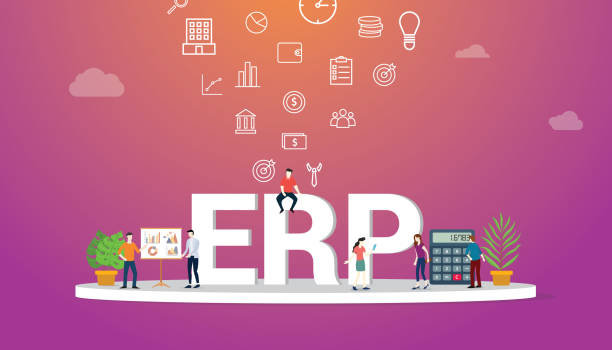
Site Responsiveness: Mobile SEO and User Experience
With the increasing use of mobile devices to search the internet, website responsiveness has become a very important factor in SEO.
Responsiveness means that your website automatically adapts to the screen size of different devices (such as mobile phones, tablets, and computers).
Google and other search engines rank responsive websites higher and provide a better user experience for mobile users.
To ensure your website is responsive, you can use Google’s Mobile-Friendly Test tool.
If your website is not responsive, you should use a responsive theme or design your website to be compatible with different devices.
Internal SEO is designed based on user experience, and site responsiveness is one of the most important factors in this area.
This is a very big advantage for SEO.
Is your online store ready to attract the maximum number of customers and increase sales? Rasaweb transforms your online business with modern and efficient online store designs.
✅ Increase speed and improve SEO
✅ Excellent user experience on mobile and desktop⚡ Get a free online store design consultation from Rasaweb!
Site Security (HTTPS): Building Trust and Better Ranking

Site Security (HTTPS): Building Trust and Better Ranking
Website security is an important factor in building user trust and site ranking.
Using the HTTPS protocol (Hypertext Transfer Protocol Secure) means encrypting information between your website and users and preventing unauthorized access to sensitive information.
Google and other search engines rank websites that use HTTPS higher and assure users that their information is secure on the website.
To enable HTTPS, you must purchase an SSL (Secure Sockets Layer) certificate for your website and install it on your server.
After installing the SSL certificate, you need to change all internal links on your website to HTTPS and make the necessary settings in your htaccess file.
Using HTTPS not only increases the security of your website but also helps improve your site’s ranking in search results.
For more information on SEO, visit the MOZ website.
Internal SEO supports secure websites.
Continuous Review and Updating of Internal SEO
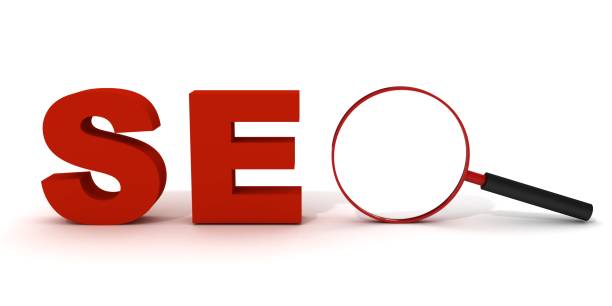
Continuous Review and Updating of Internal SEO
Internal SEO is an ongoing process and requires continuous review and updating.
As search engine algorithms change and user behavior changes, internal SEO strategies must also be updated.
Regularly review your website for internal SEO, update your keywords, improve your content, optimize your site speed, and ensure your website is responsive.
Use web analytics tools (such as Google Analytics and Google Search Console) to track your website’s performance and adjust your internal SEO strategies based on the data obtained.
By continuously reviewing and updating internal SEO, you can improve your website’s ranking in search results and attract more traffic.
This process also involves analyzing competitors and using data to improve your SEO strategy.
Success in internal SEO requires patience, perseverance, and sufficient knowledge.
By following the latest trends and changes in search engine algorithms, you can always be one step ahead of the competition and achieve better results.
Frequently Asked Questions
| Question | Answer |
|---|---|
| What is Internal SEO (On-Page SEO)? | It refers to the set of actions that are performed within a website to improve its ranking in search engines. |
| Why is Internal SEO important? | Because it helps search engines better understand your site’s content and structure and improves the user experience. |
| What are the most important elements of Internal SEO? | Title and meta descriptions, keywords, URL structure, quality content, image optimization, internal linking, and site speed. |
| How do we optimize the Title Tag and Meta Description? | The title should include the main keyword and be attractive, and the meta description should be a persuasive summary of the content with relevant keywords. |
| What is the role of keywords in Internal SEO? | Keywords help search engines understand what the page content is about and should be used naturally and intelligently in the text. |
| How is image optimization done for Internal SEO? | By compressing the size, using a descriptive filename, and filling the Alt tag with relevant descriptions and keywords. |
| What is Internal Linking and what is its function? | It is the connection of different pages of the site to each other. This helps distribute the credibility of pages (Page Authority) and improve search engine crawling. |
| What is the importance of site loading speed in Internal SEO? | High speed improves the user experience and is one of the important ranking factors for search engines like Google. |
| What effect does Site Responsiveness (Mobile-Friendliness) have on Internal SEO? | Given the increase in mobile users, responsiveness is essential for providing a suitable user experience on all devices and Google’s mobile-first indexing. |
| What are the important factors related to content in Internal SEO? | Originality, quality, comprehensiveness, readability, proper use of headings (H1, H2,…) and regular content updates. |
and other services of Rasa Web advertising agency in the field of advertising
Intelligent Marketing Automation: An effective tool for user interaction with precise audience targeting.
Intelligent Digital Advertising: Professional optimization to improve SEO ranking using intelligent data analysis.
Intelligent Advertising Campaign: Designed for businesses looking to manage campaigns through attractive user interface design.
Intelligent Social Media: Professional optimization to increase sales using Google Ads management.
Intelligent Google Ads: A professional solution for attracting customers with a focus on precise audience targeting.
And more than a hundred other services in the field of internet advertising, advertising consulting and organizational solutions
Internet Advertising | Advertising Strategy | Advertorial
Resources
What is Internal SEO and Why is it Important?
,Comprehensive Guide to Internal SEO: Key Tips to Improve Your Site Ranking
,What is Internal SEO? Complete On Page SEO Tutorial in 2024
,Internal SEO (On-Page SEO) Training with Comprehensive Checklist for 1403
? To elevate your business in the digital world, Rasaweb Afarin Digital Marketing Agency, specializing in fast website design and professional SEO, and campaign management, is ready to accompany you to achieve the best results.
📍 Tehran, Mirdamad Street, next to the Central Bank, South Kazerun Alley, Ramin Alley No. 6


